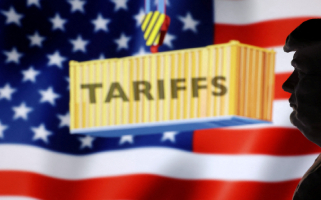Recently, changes in global tariff policies have had a profound impact on the production, cost, and market of Apple iPhones. The U.S. has imposed high tariffs on imports from China and other countries, and China has also increased tariffs on imports from the U.S. These measures are reshaping Apple’s global supply chain and market strategies.
Starting from 12:01 on April 10, 2025, China has imposed an additional 84% tariff on all imports originating from the United States, on top of the existing tariff rates. Meanwhile, the U.S. tariff rate on Chinese imports has reached 125%, while China’s tariff rate on U.S. imports has been increased from 34% to 84%。
Rising Costs and Prices
Affected by the tariff policies, the production costs and retail prices of Apple iPhones have soared. Analysts from Bank of America pointed out that if Apple were to move all iPhone production to the United States, the costs would surge by over 90%. The primary reason is the higher labor costs in the U.S., which would increase the price of iPhones by 25%. Moreover, if Apple also has to pay high tariffs on imported components, the total costs would increase by over 90%
Apple’s Response Strategies
-Emergency Shipment and Inventory Stockpiling
To mitigate the impact of tariff policies, Apple has been urgently shipping products. It is reported that Apple chartered flights from India to transport one million iPhones before the new tariffs took effect in the U.S. Since March, six cargo planes, each with a capacity of 100 tons, have taken off from India, with one plane taking off on the very day the new tariffs were implemented.
-Diversifying the Supply Chain
Apple is working to diversify its supply chain to reduce dependence on a single country. Currently, Apple’s components mainly come from China, Taiwan, South Korea, and Japan, while assembly is distributed across China, Vietnam, and India. However, 90% of its production capacity is still concentrated in China.
Market Reactions and Future Outlook
The uncertainty of tariff policies has led to consumer concerns about price increases, triggering a buying spree. Many consumers have been purchasing iPhones before the tariffs take effect to avoid potential future price hikes.In the long term, the impact of tariff policies on Apple remains highly uncertain. If tariffs persist, Apple may have to increase product prices, which would affect its market share and consumer demand. Moreover, adjusting the supply chain will take several years, posing significant challenges to Appl
Conclusion
The changes in global tariff policies have had a significant impact on the production, cost, and market of Apple iPhones. Apple is responding to these challenges through emergency shipments and diversifying its supply chain. However, the long-term uncertainty of tariff policies continues to put immense pressure on Apple. In the future, Apple needs to find a balance between cost control, supply chain optimization, and market demand to navigate the ever-changing global trade landscape.
